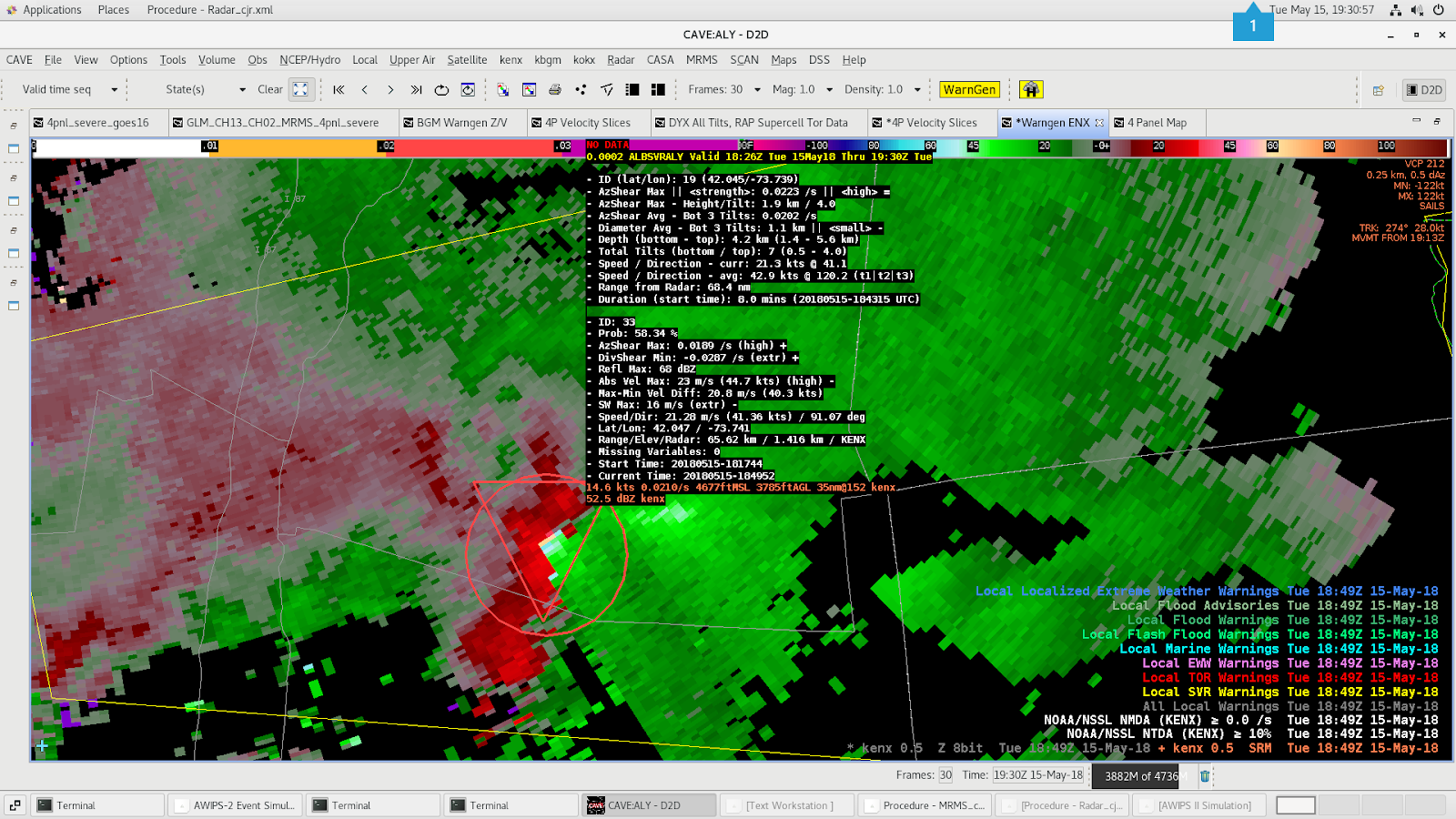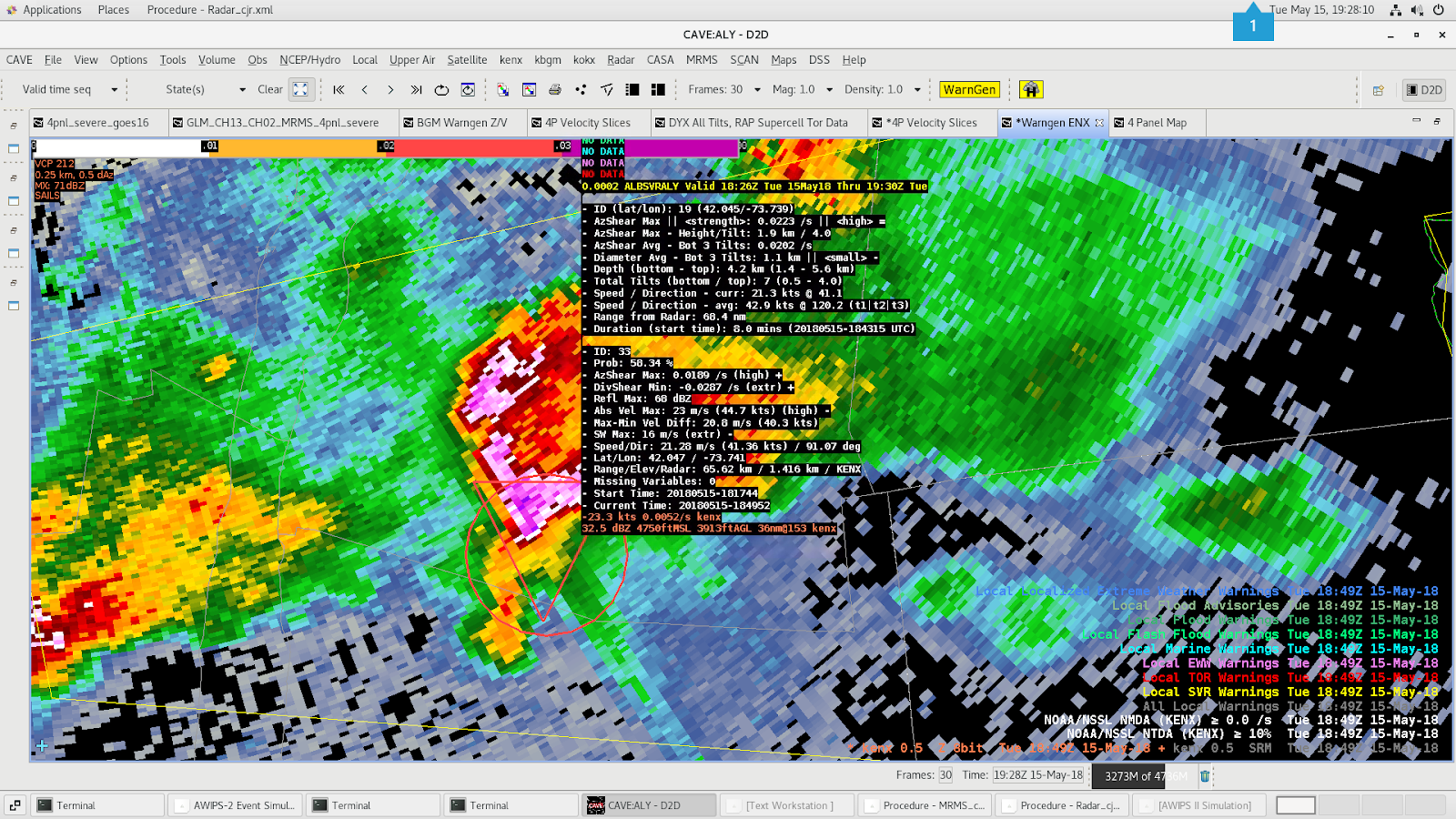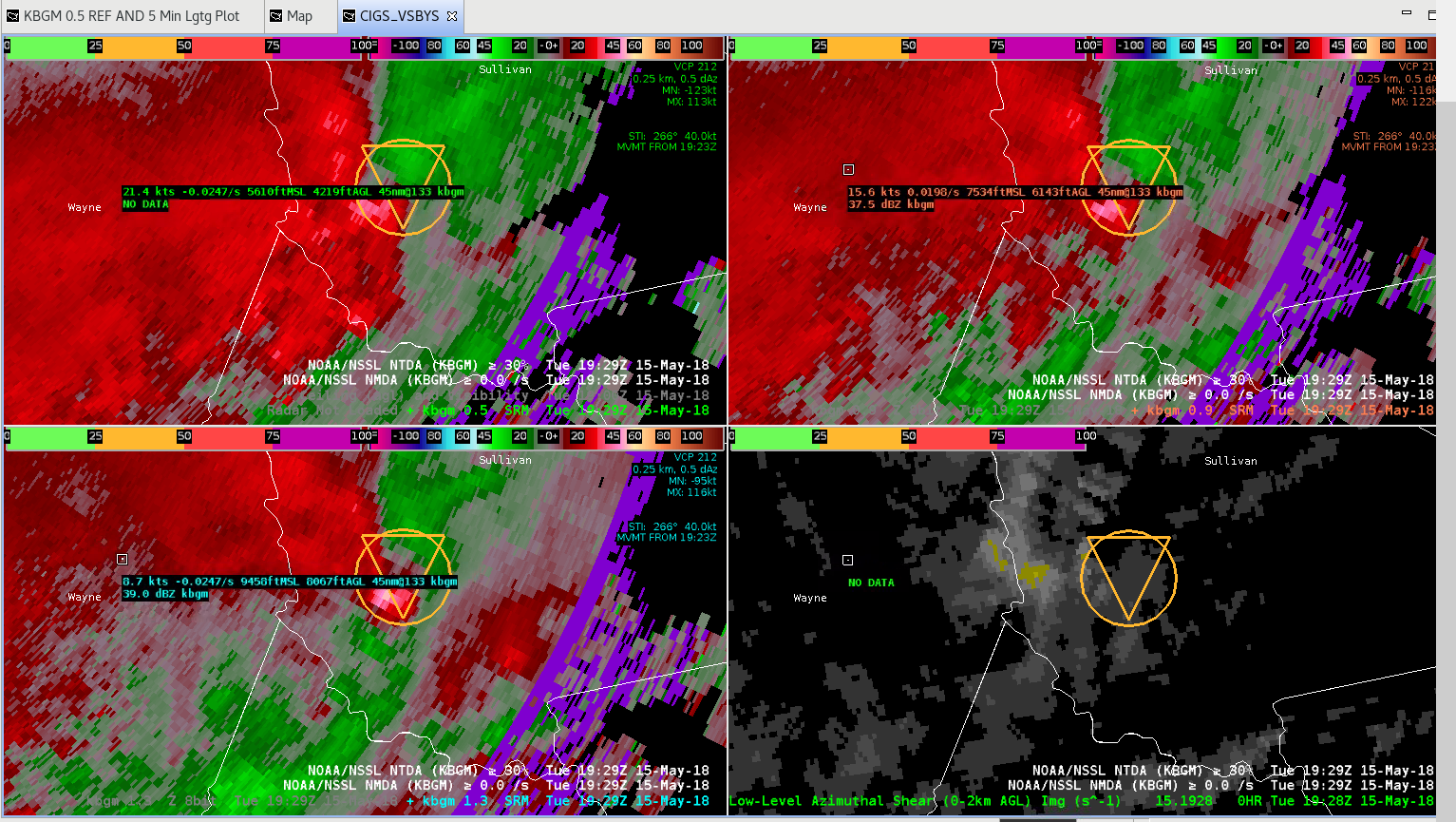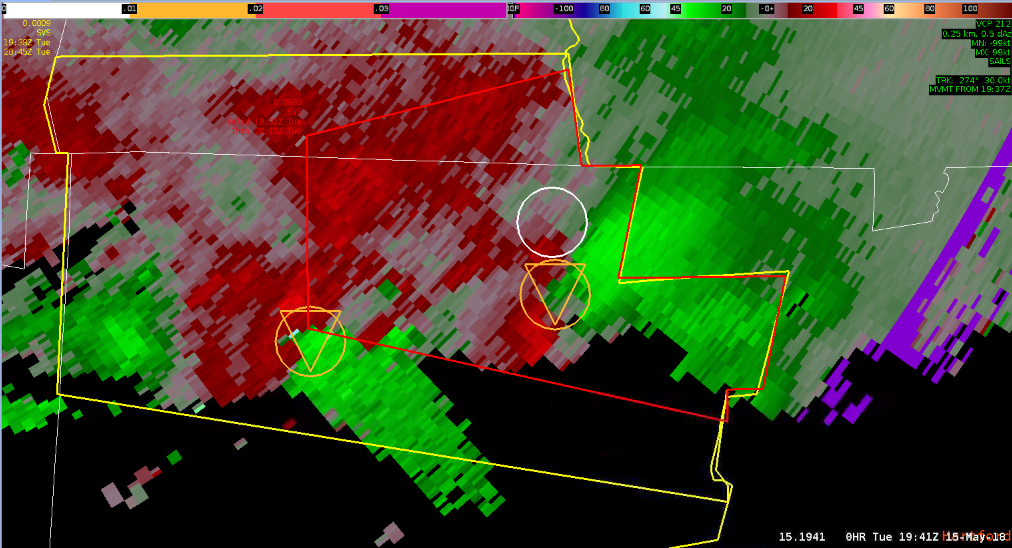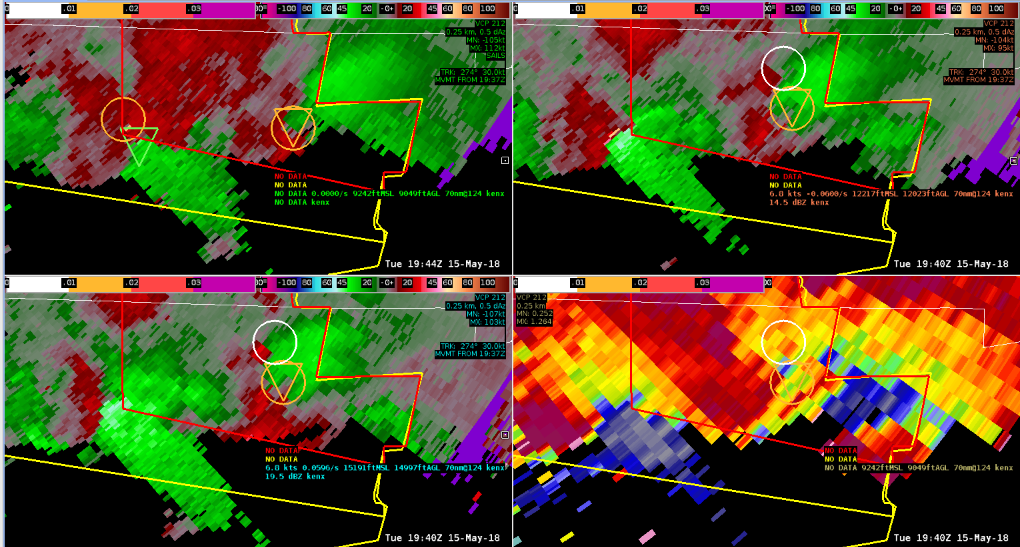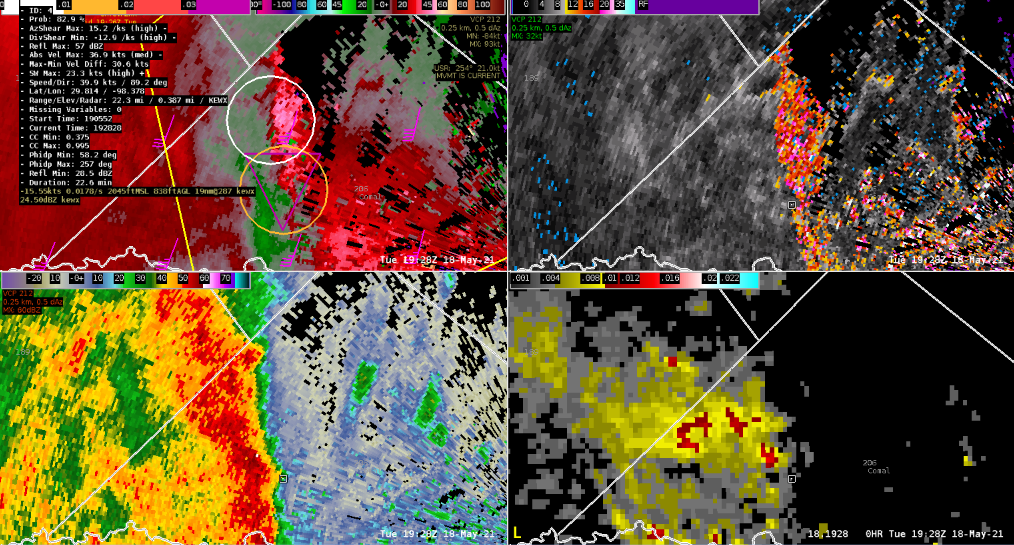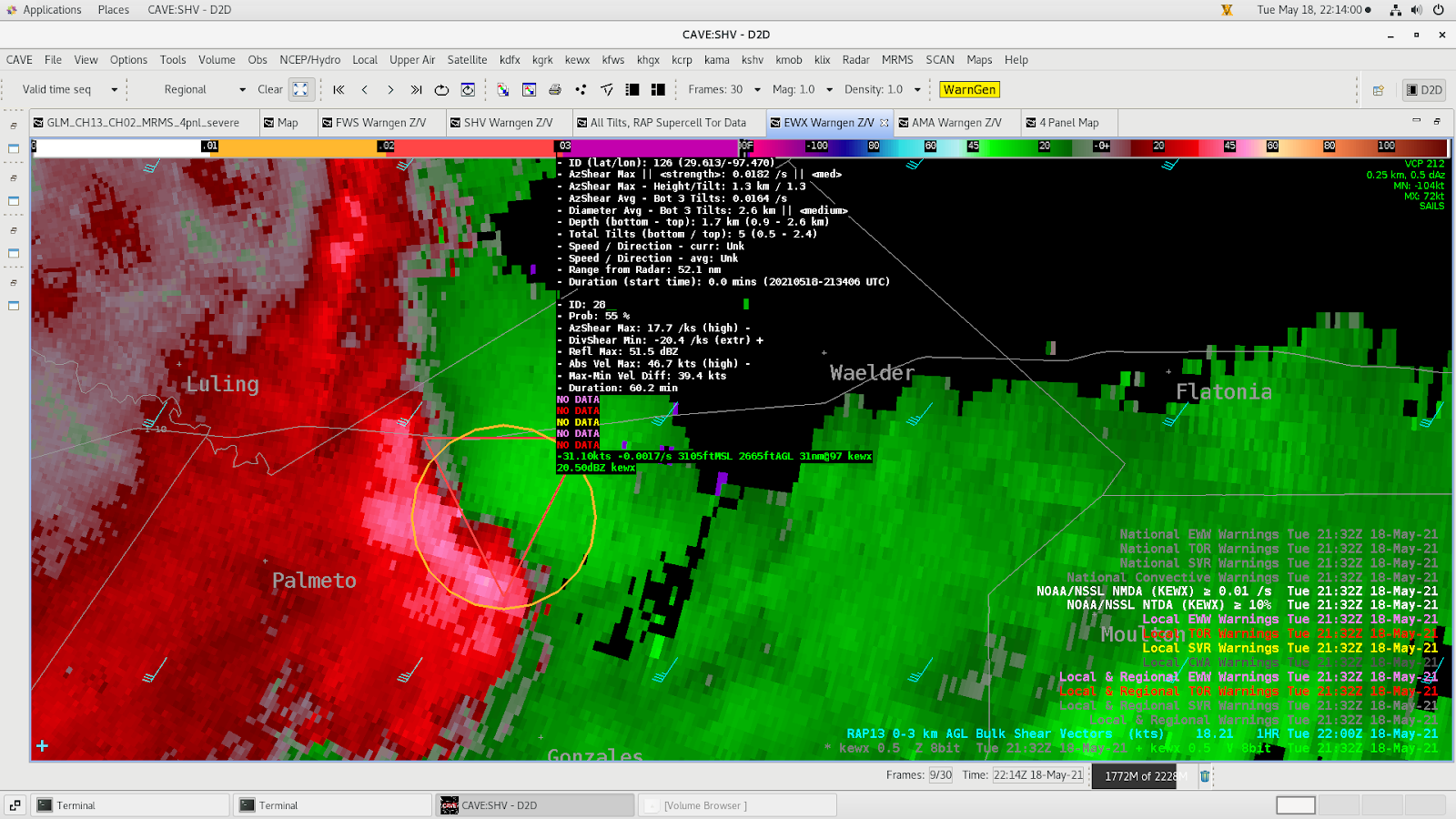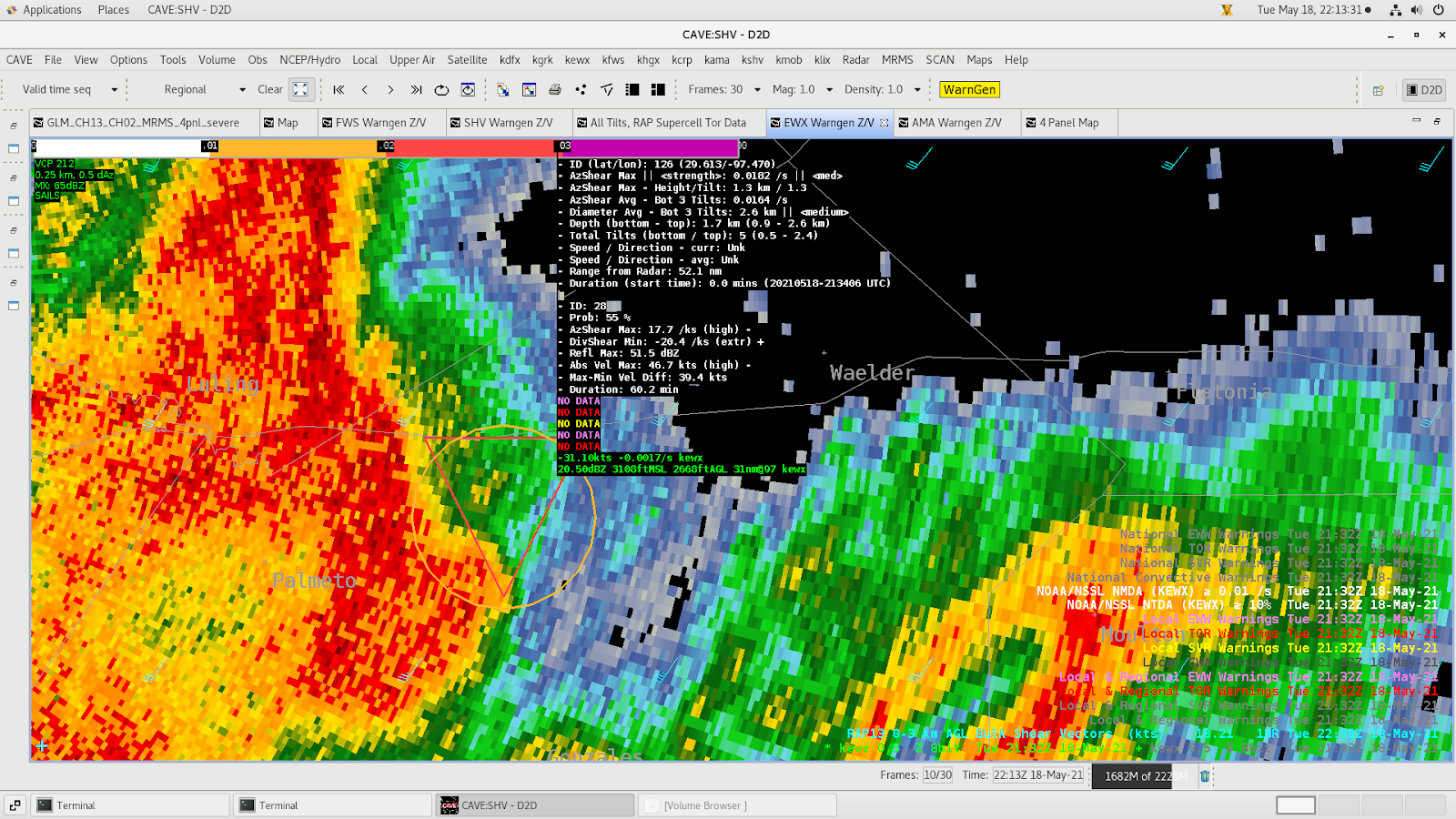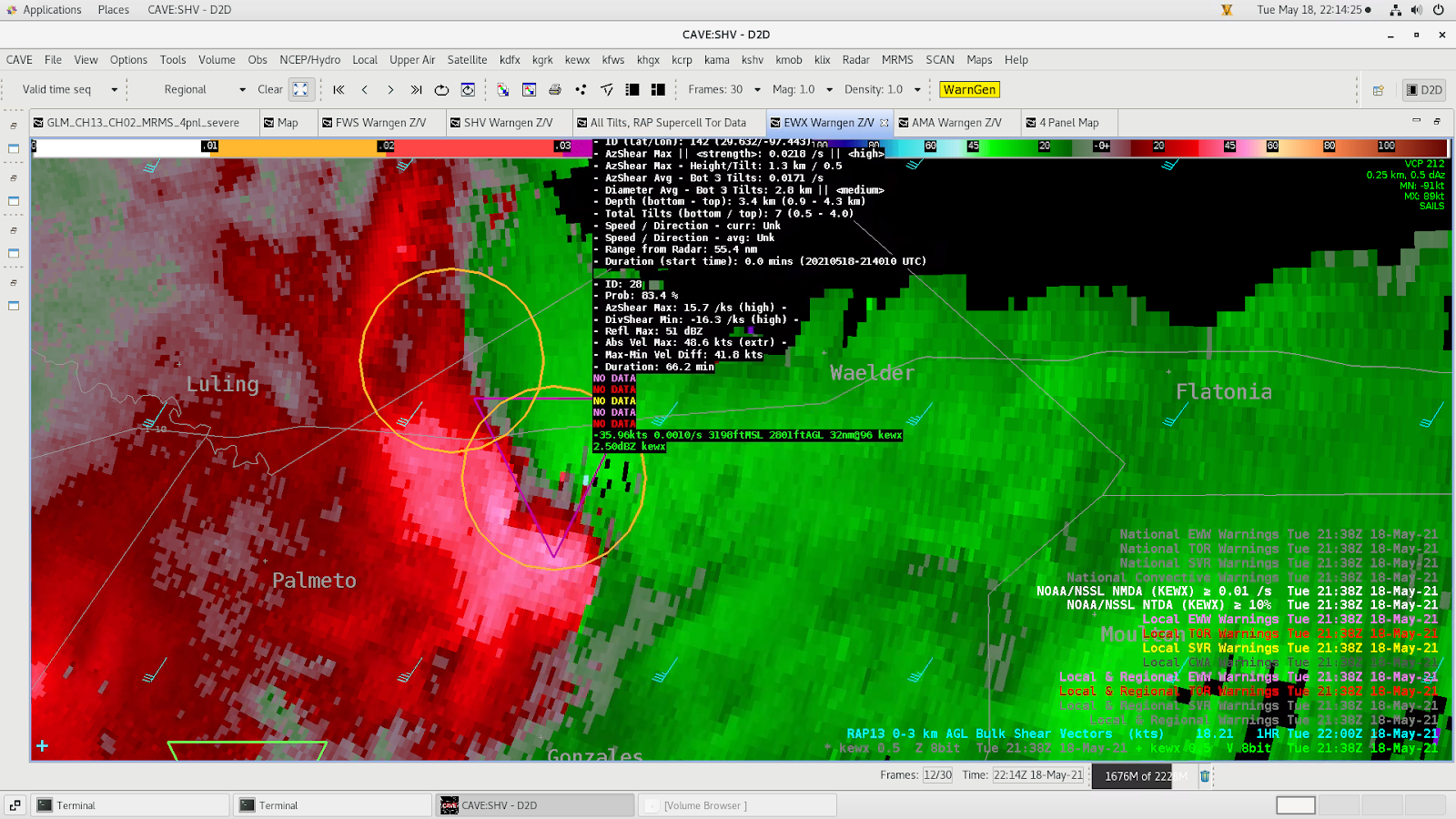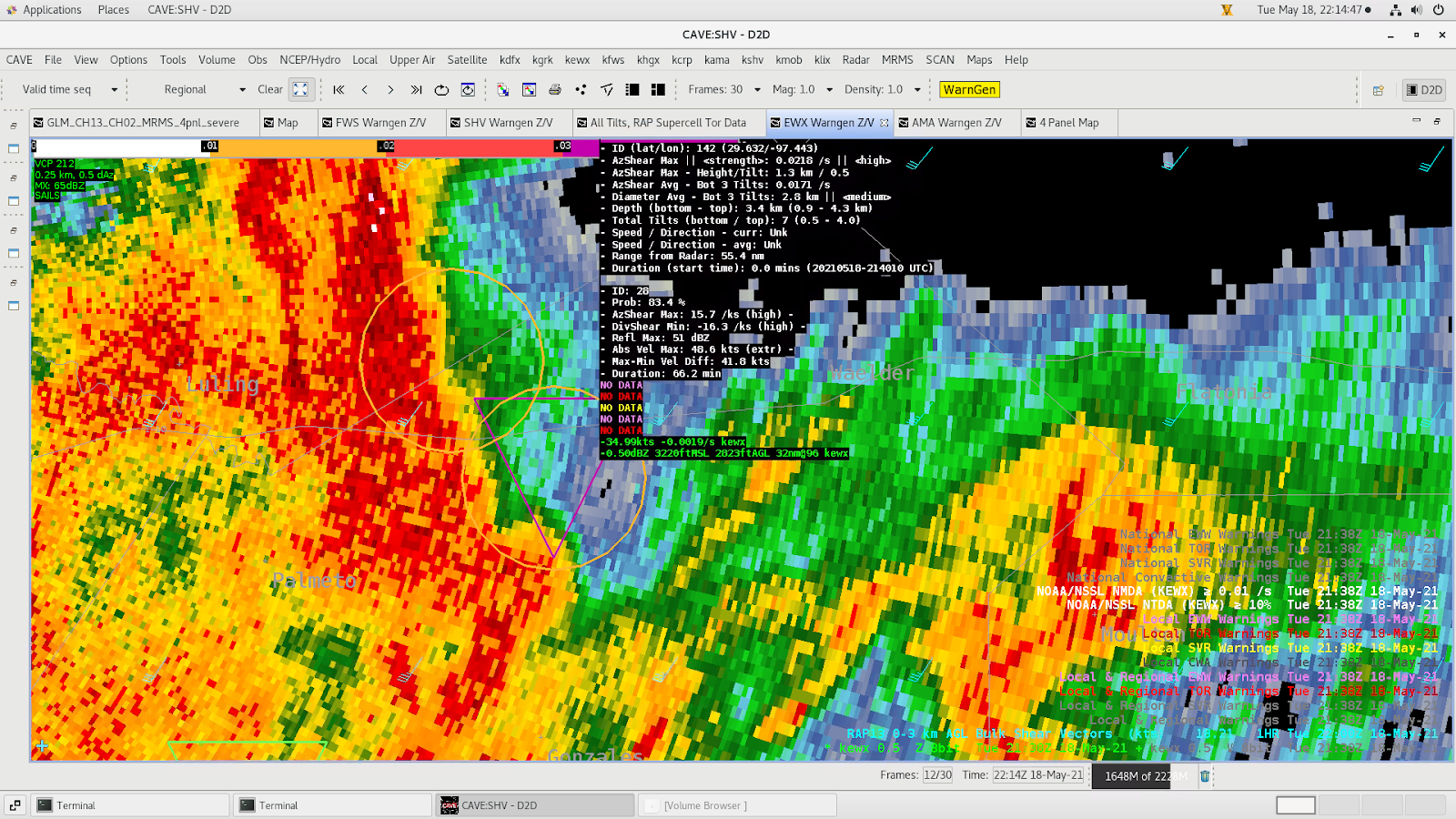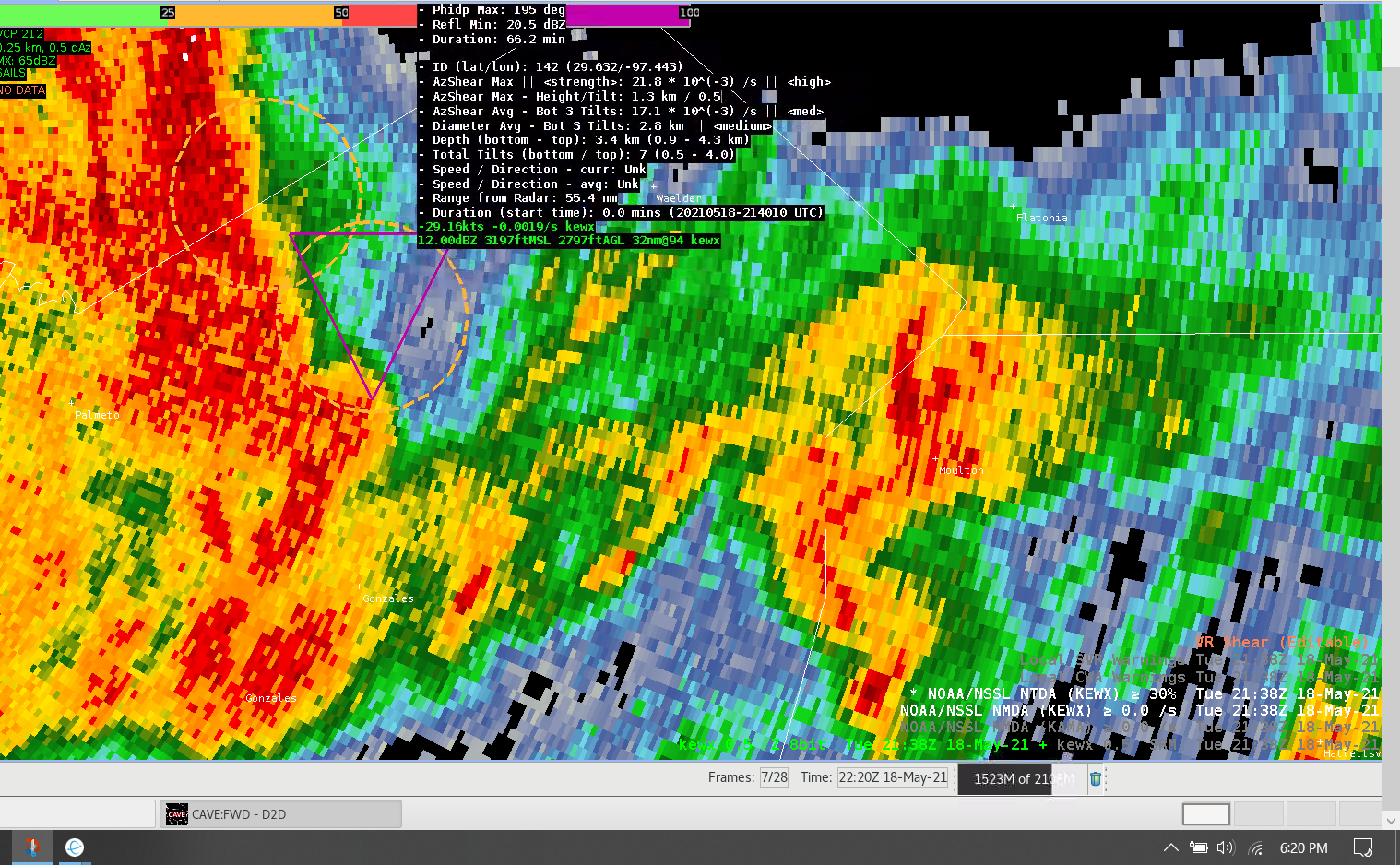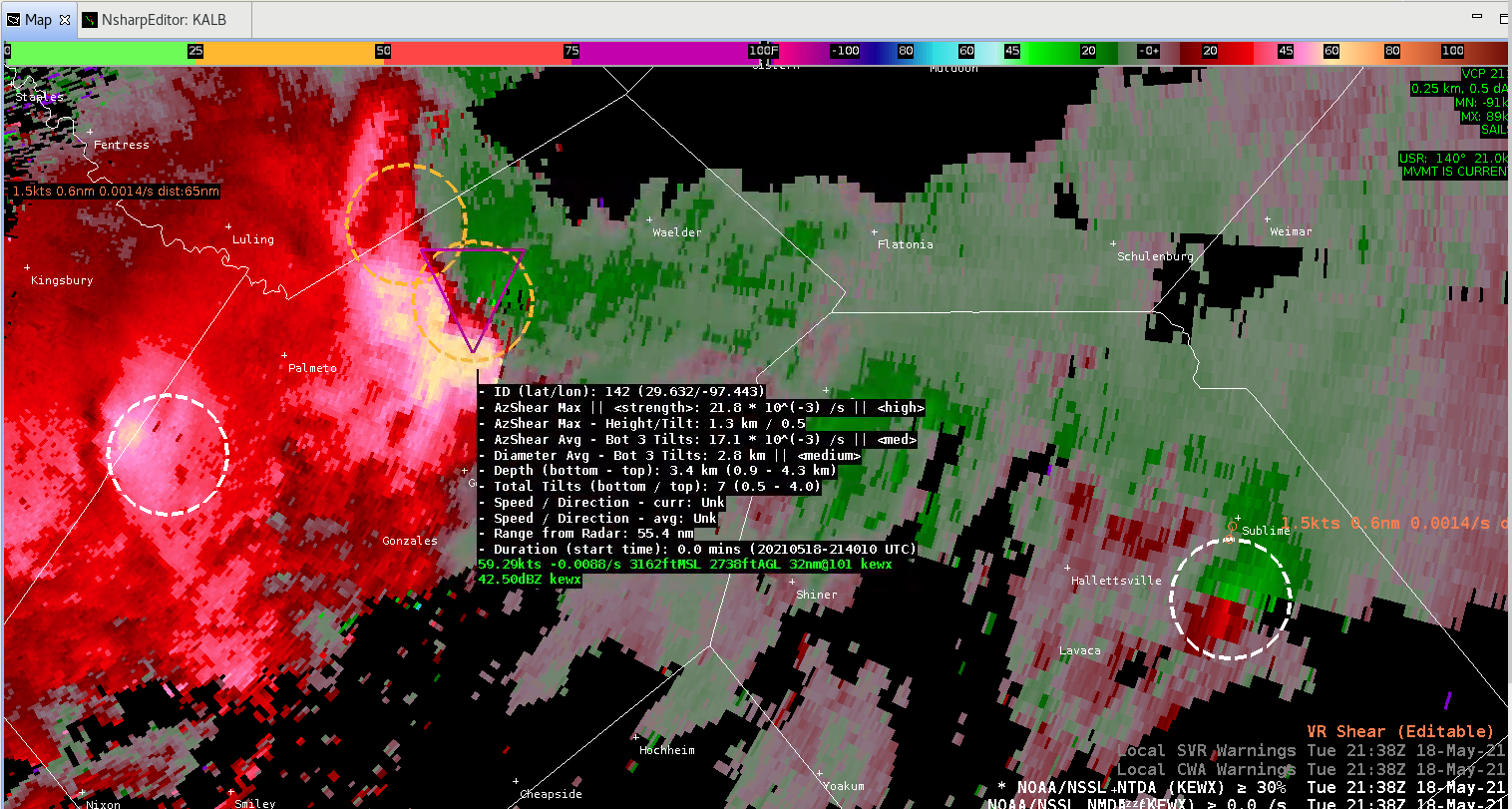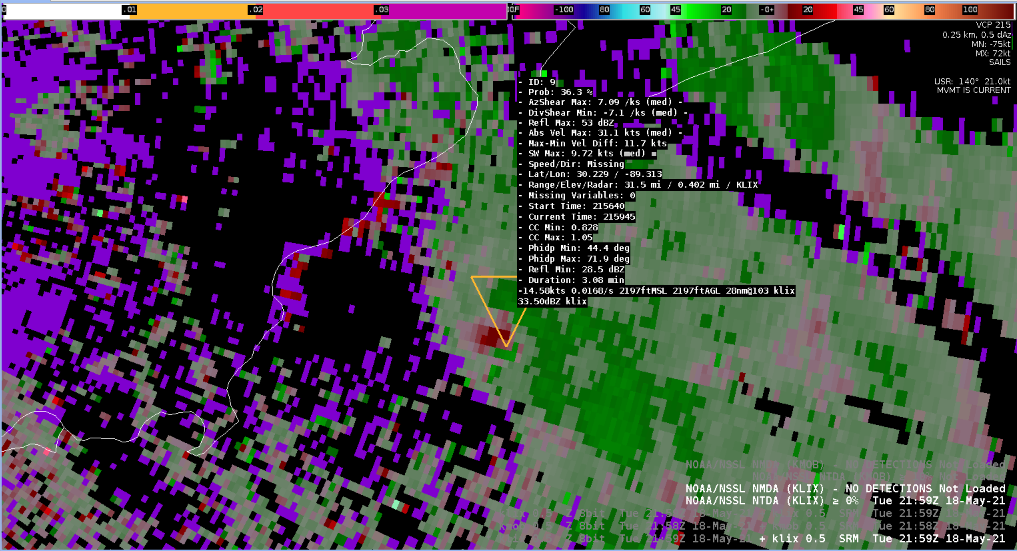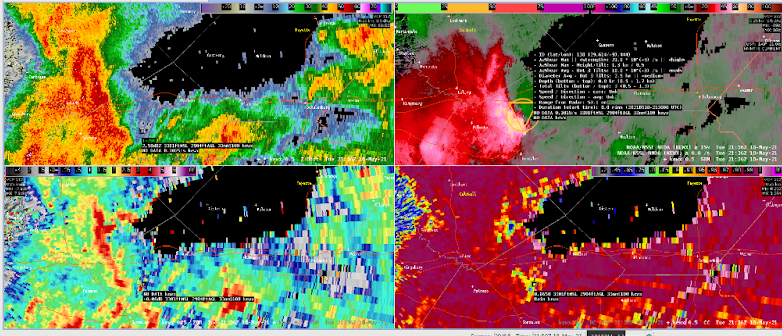Interesting confirmation from the NTDA/NMDA Algorithms in the DMX Archived Review. An earlier Tornado Warning was in effect for a main ESE tracking supercell, with plenty of storm reports previously. Out ahead of this storm, a weak cell was approaching from the SW and was beginning to merge and cut off the necessary inflow to the already ongoing tornado in south-central Jasper County.
This brought forth an interesting situation. NMDA/NTDA algorithms were lining up but at low probabilities at 2034Z (NTDA 23.56%) which was enough to grab my attention. Since this entire event was tricky due to such an elevated storm environment (analyzing SRM/BV at atleast 3.1º and above), seeing the algorithms line up was enough confidence given to propose a new TOR for the southern part of the current polygon.
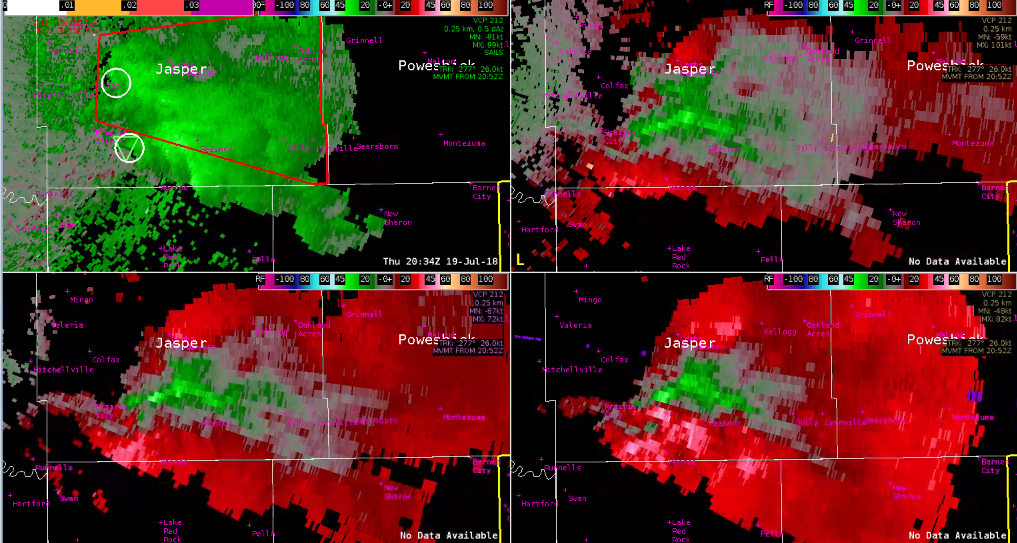
From here, NMDA began to show increasing trends which supported a visual interpretation of increasing cyclonic rotation in the mid levels.

Further increases in NTDA/NMDA along with increasing Vrot now in the lowest tilt (indicative of either a strengthening tornado or stretching/tightening of rotational velocity to the lowest levels) increased forecaster confidence in the decision of a warning.
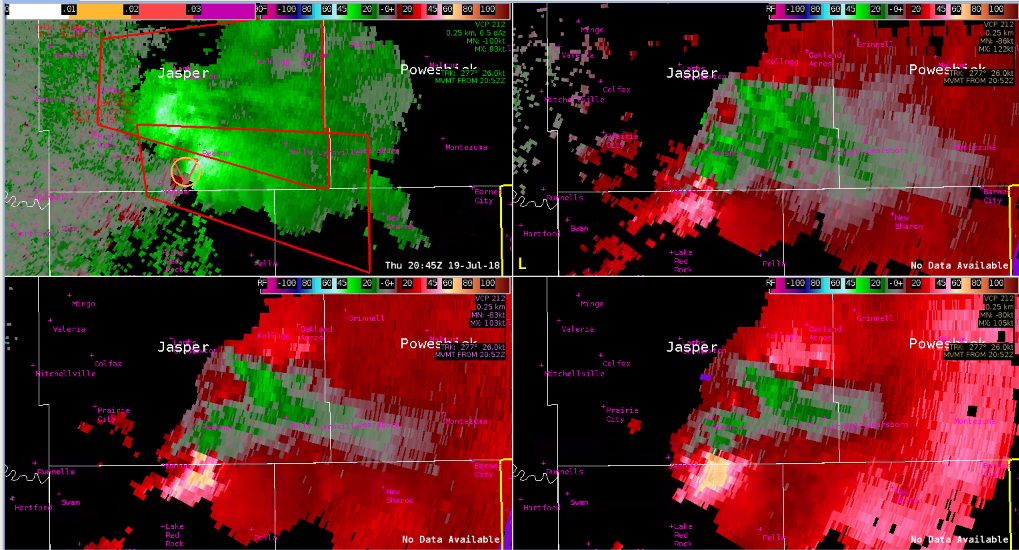
This was a great illustration of both an early heads up, and a warning confirmation from both algorithms. Only mistake was not using the Bunkers Right Motion wind barbs to illustrate a tall enough updraft’s potential at a far right deviant motion (with a follow up warning clocked much more southeast to account for this motion)
– Dusty Davis

